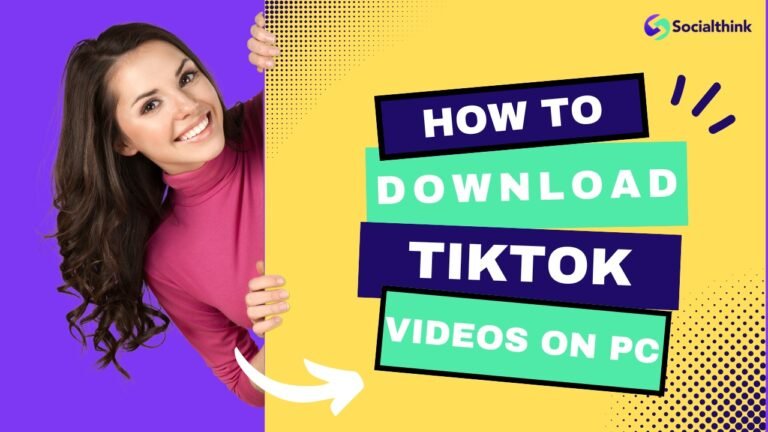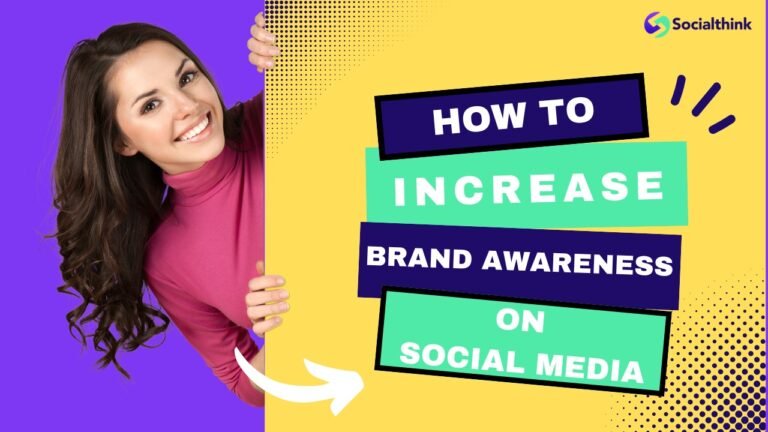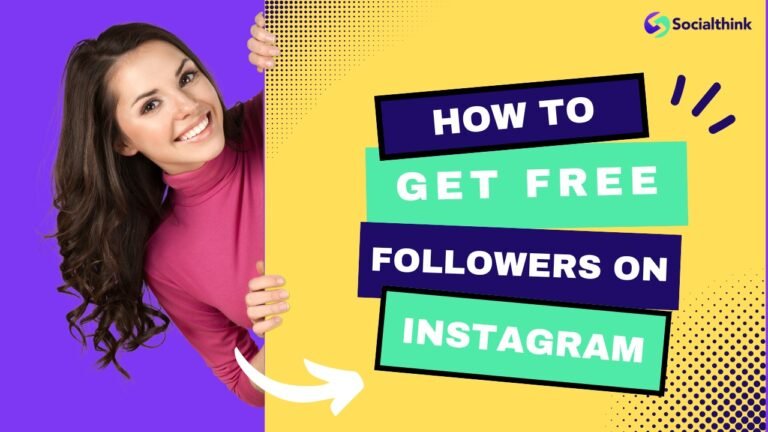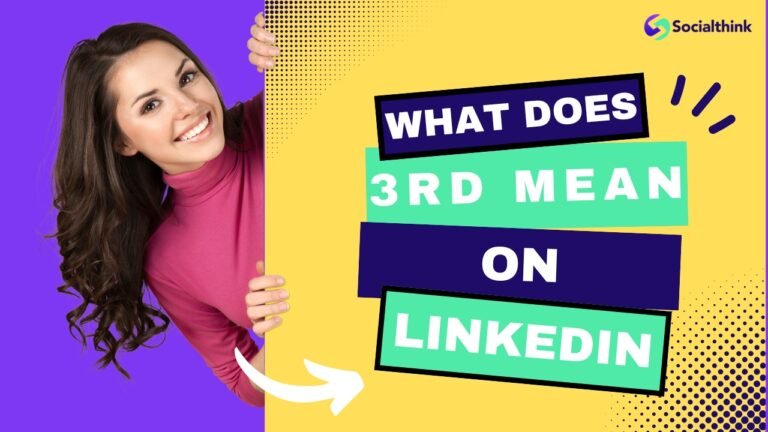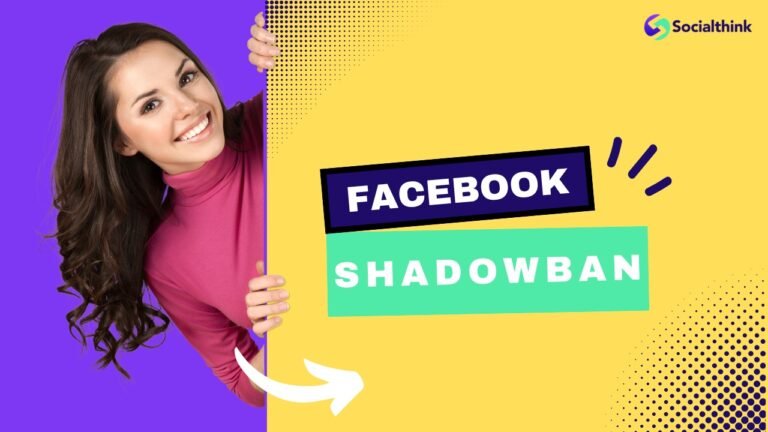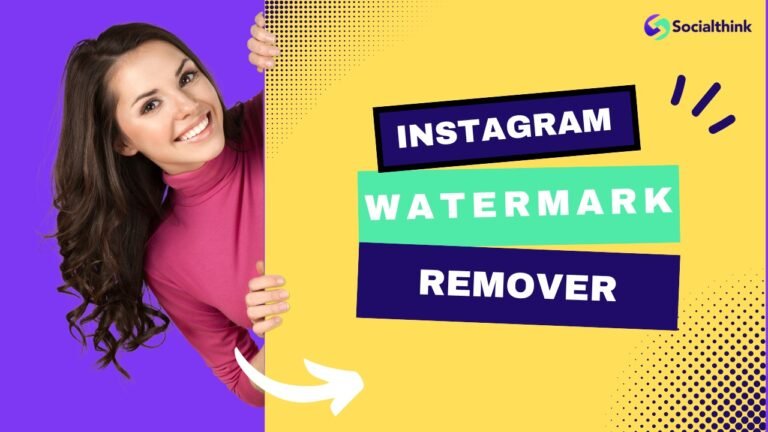Social Media Marketing Funnel: Meaning, Importance, Stages, Metrics & Examples
In today’s interconnected digital sphere, a robust social media presence is more than just a luxury—it’s a necessity.
Social Think understands this imperative and helps businesses navigate the complexities of social media marketing. We deliver strategies, analytics, and insights that drive tangible business results.
One of the most effective approaches to make the most of social media is the social media marketing funnel.
Let’s dive into how to use it for your brand’s growth.
What Is A Social Media Marketing Funnel?

The social media marketing funnel represents the customer journey from initial awareness to becoming a loyal customer.
It is a visual representation of the path a potential customer takes, from discovering your brand on social media to making a purchase and advocating for your business.
Understanding this sales funnel is super important for customizing your content marketing and social media strategy to connect with your target audience at every stage of the funnel.
Why Social Media Marketing Funnel Is Important?

Why should businesses care about the social media marketing funnel?
Because it offers a structured framework for understanding and optimizing the customer experience.
A well-defined marketing funnel allows you to:
- Attract the right audience with relevant social media content.
- Nurture potential leads through the consideration stage.
- Convert prospects into customers through targeted messaging.
- Foster brand loyalty and encourage repeat purchases.
- Turn happy customers into brand advocates.
Strategically guiding social media users through each stage of the funnel can significantly improve businesses’ lead generation, customer acquisition, and overall ROI from social media marketing.
5 Stages Of A Social Media Marketing Funnel

Let’s break down the social media funnel stages.
There are five critical stages that every social media user passes through during their customer journey:
Top of the Funnel (TOFU): Awareness
This first stage is all about capturing attention and creating brand awareness.
The goal is to make your target audience aware of your brand, products, or services. This can be achieved through various types of content, including blog posts, videos, infographics, and engaging social media ads.
It’s important to focus on the pain points of your potential customer and offer valuable solutions to build trust and establish your expertise.
Middle of the Funnel (MOFU): Consideration/Interest, Deliberation and Involvement
Once you’ve captured the attention of your target audience, the next stage involves nurturing their interest and guiding them towards considering your brand as a solution.
Provide more in-depth information about your offerings through white papers, case studies, webinars, and product demos.
This is the consideration stage where you demonstrate the value and benefits of your products or services and differentiate yourself from competitors.
Bottom of Funnel (BOFU): Conversion/Action
At this stage of the, potential leads are ready to take action. Focus on providing compelling reasons to choose your brand over others.
This could involve offering special promotions, discounts, or guarantees to incentivize purchases. Ensure a seamless conversion stage by optimizing your landing page, simplifying the checkout process, and providing excellent customer service.
Post Purchase: Loyalty/Engagement
The journey doesn’t end with a purchase. Nurturing current customers is important for building brand loyalty and driving repeat business.
Engage with your loyal customers through exclusive content, loyalty programs, and personalized communication. Encourage them to share their experiences and provide feedback to foster a sense of community and belonging.
Advocacy: Referrals and Brand Ambassadorship
The ultimate goal is to transform satisfied customers into brand advocates. These are individuals who are passionate about your brand and actively promote it to their networks.
Encourage brand advocates by providing exceptional customer experience, recognizing their contributions, and empowering them to share their customer testimonials and product reviews.
Consider implementing a referral program to incentivize brand ambassadors to spread the word about your business.
How To Build A Social Media Marketing Funnel?

Creating an effective social media funnel requires careful planning and execution.
Here’s a step-by-step guide to help you get started:
Define Objectives
Before diving into the specifics, clearly define what you want to achieve with your social media marketing.
Are you looking to increase brand awareness, generate potential leads, drive sales, or foster customer loyalty? Having well-defined objectives will guide your strategy and ensure that your efforts are aligned with your business goals.
Know Your Audience
A deep understanding of your target audience is essential for creating a social media strategy that resonates with them.
Conduct market research to identify their demographics, interests, pain points, and online behavior. Use this information to tailor your content marketing strategy and choose the right social media platform to reach them effectively.
Create Engaging Content
Content marketing is the fuel that drives your social media funnel. Develop valuable content that addresses the needs and interests of your target audience at each stage of the.
This could include blog posts, videos, infographics, e-books, webinars, and more. Ensure that your social media content is visually appealing, informative, and shareable to maximize its impact.
Choose The Right Platforms
Not all social media platform are created equal. Select the platforms that are most relevant to your target audience and align with your business goals.
Consider factors such as demographics, content format preferences, and engagement levels when making your decision.
Focus your efforts on the platforms where you can effectively reach and engage with your ideal customers.
Offer Value and Resources
Providing value to your audience is important for building trust and establishing your expertise.
Offer valuable resources such as lead magnets, templates, checklists, and guides that address their pain points and help them achieve their goals.
This will position you as a trusted authority in your industry and encourage them to move further down the social media sales funnel.
Optimize Landing Pages
Your landing page serves as the destination for social media users who click on your ads or posts. Ensure that your landing page is optimized for conversions by creating a clear and concise message, using compelling visuals, and including a strong call to action.
Make it easy for visitors to take the next stage, whether it’s signing up for a newsletter, requesting a demo, or making a purchase.
Use Analytics
Social media analytics provide valuable insights into the performance of your social media marketing efforts.
Track key metrics such as reach, engagement, website traffic, lead generation, and conversion rates to measure the effectiveness of your campaigns and identify areas for improvement. Use this data to refine your strategy and optimize your social media funnel for maximum impact.
Follow-Up Campaigns
Don’t let potential leads slip through the cracks. Implement follow-up campaigns to nurture them and guide them towards conversion. This could involve sending targeted emails, retargeting ads, or personalized messages based on their behavior and interests.
Stay top of mind and continue providing value to keep them engaged and move them closer to becoming customers.
Common Social Media Funnel Mistakes To Avoid

While implementing a social media marketing funnel, here are common mistakes to avoid:
- Not Delivering Value: One of the biggest mistakes is failing to provide value to your audience. Focus on creating social media content that is informative, entertaining, and relevant to their needs and interests. Avoid self-promotional content and prioritize building trust and establishing your expertise.
- Neglecting Engagement: Social media is a two-way street. Don’t just broadcast your message—engage with your audience and foster meaningful conversations. Respond to comments and messages promptly, participate in relevant discussions, and encourage community management to build relationships and create a loyal following. Social listening will help monitor conversations around your brand and industry.
- Ignoring Analytics: Failing to track and analyze your social media performance is a recipe for disaster. Without social media analytics, you won’t know what’s working and what’s not, making it impossible to optimize your strategy and achieve your goals. Regularly review your metrics and use the insights to make data-driven decisions that improve your results.
How Will You Fill The Gaps In Your Social Media Marketing Funnel?

To address gaps in your social media marketing funnel, I’d focus on creating engaging content that provides real value at every stage of the. Using social proof like customer testimonials and product reviews, builds trust and encourages action.
It’s important to identify the right social channel for your target audience, plus analyze social media analytics, to optimize lead generation and boost customer acquisition.
Social media ads can target audiences based on interests to drive brand awareness and conversions to turn potential leads into loyal customers.
Social Media Marketing Funnel Metrics

Metrics are essential to understand if your funnel is working as intended.
Here are key metrics to track at each stage of the:
- Awareness: Impressions, reach, website traffic, new followers.
- Consideration: Engagement rate, time spent on page, lead generation.
- Conversion: Conversion rate, cost per acquisition, return on ad spend.
- Loyalty: Repeat purchase rate, customer lifetime value, customer retention rate.
- Advocacy: Referral rate, customer reviews, customer testimonials, social proof, brand mentions.
Social Media Marketing Funnel Budget

Allocate your budget strategically across different stages of the funnel to maximize your ROI.
Here’s a general framework for budgeting your social media marketing efforts:
- Prospecting: Allocate a significant portion of your budget to prospecting activities aimed at reaching new audiences and generating brand awareness. This could involve running social media ads on platforms like Facebook, Instagram, and LinkedIn, as well as investing in content marketing and social media promotion.
- Retargeting: Retargeting is a cost-effective way to re-engage potential leads who have already shown interest in your brand. Allocate a portion of your budget to retargeting campaigns that deliver personalized messages and offers to these prospects, encouraging them to take the next stage in the sales funnel.
How Do Social Media Marketing Funnels Differ From Traditional Sales Funnels?

While both aim to convert prospects into customers, social media marketing funnels emphasize engagement and community building, whereas traditional sales funnels are often more linear and sales-focused.
The primary differences between social media marketing funnels and traditional sales funnels are in the ways businesses approach optimizing each stage.
Optimizing Awareness
- Social Media: Focus on creating shareable content marketing that resonates with your target audience and encourages organic reach and engagement.
- Traditional Sales: Focus on advertising and promotional activities to generate leads and drive traffic to your website or store.
Optimizing Interest
- Social Media: Nurture potential leads with valuable content marketing, personalized communication, and community management.
- Traditional Sales: Provide detailed product information, demos, and case studies to showcase the benefits of your offerings.
Optimizing Engagement
- Social Media: Foster meaningful interactions with your followers through community management, contests, and user-generated social media content.
- Traditional Sales: Build relationships with prospects through personalized sales pitches, follow-up calls, and in-person meetings.
Optimizing Action
- Social Media: Simplify the purchasing process by optimizing your landing page, offering special promotions, and providing excellent customer service.
- Traditional Sales: Close the deal by overcoming objections, negotiating terms, and providing a seamless purchasing experience.
Optimizing Advocacy
- Social Media: Encourage happy customers to share their experiences, provide social proof, and become brand advocates through loyalty programs and referral incentives.
- Traditional Sales: Maintain relationships with current customers through ongoing communication, personalized offers, and exceptional customer service to foster customer loyalty.
Social Media Funnel Examples

Here are 5 social media funnel examples, explained to ensure you understand each stage of the customer journey:
- Gymshark: The company uses its strong social media presence, with millions of followers, to connect with its target audience. They provide information about their products and strategically partner with influencers to expand their reach. This method ensures the traffic goes directly to Gymshark’s pages, keeping social media users engaged longer than they would if simply directed to a sales page. This is a great way to create brand awareness to then turn into loyal customers to create a social media sales funnel.
- HubSpot: HubSpot uses informative blog posts and engaging social media content to address the common pain points of its target audience. By providing valuable information and insights, they generate brand awareness and build trust with potential customers. They then offer free resources like e-books in exchange for emails, nurturing relationships, and guiding prospects further down the social media marketing funnel. This converts potential leads into the action stage.
- Netflix: The streaming service creates a buzz and generates brand awareness by promoting their original shows and movies across various channels. They use intriguing trailers, social media campaigns, and collaborations with influencers to build anticipation and entice potential viewers. This is a great way to gain new followers to then turn into subscriptions which drives customer acquisition.
- Crazy Egg: Crazy Egg uses a heat map tool to help businesses understand how users interact with their site. They build awareness with paid traffic, blog content, and SEO to get more exposure for their brand. They use Facebook ads to build awareness, guiding readers down the funnel to make a purchase. This ensures that the business gains potential leads to turn into new customers.
- Basecamp: This project management tool doesn’t run many paid advertising campaigns, but it does share relevant content on its blog, called Signal vs Noise, for its target audience. They build awareness for their company and products, then funnel prospects to a page where they can express further interest in their offering. This leads to a page where they can sign up for a free trial to encourage the action stage. This ensures that they turn their new followers into loyal customers.
FAQ’s:
What Elements Make Up A Social Media Marketing Funnel?
The social media marketing funnel consists of several important elements that guide potential leads on their customer journey.
These elements are brand awareness at the top, the consideration stage where prospects learn about your brand, the conversion stage where they become customers, brand loyalty where they become repeat buyers, and brand advocates who promote your brand.
Each stage of the funnel requires different strategies and types of content to move social media users to the next stage.
What Role Does Social Media Play in Your Marketing Funnel?
Social media is used in a marketing funnel to attract potential customers to move them to the next stage then.
By creating engaging content and focusing on community management, you can drive lead generation, increase customer acquisition, and foster brand loyalty.
The social media platform helps businesses to connect with their target audience, understand their needs, and provide value, which are all essential for turning new followers into loyal customers.
What Role Does Content Play In A Social Media Marketing Funnel?
Content marketing is the main element that drives the social media marketing funnel.
Different types of content, such as blog posts, videos, and infographics, are used to attract the target audience, address their pain points, and guide them through the different stages.
By delivering valuable content that resonates with your audience, you can build trust and encourage them to take the next stage, ultimately converting them into customers.
How Can You Target Different Audience Segments Within Your Social Media Marketing Funnel?
To target different audience segments, you must segment them based on their demographics, interests, and online behavior. By creating valuable content for each segment, you can ensure your message resonates with each group.
This includes personalizing social media ads and tailoring your communication to address their specific needs, which helps in moving them through the marketing funnel. This drives lead generation, boosts customer acquisition, and fosters brand loyalty.
What Makes A Social Media Marketing Funnel Effective?
An effective social marketing funnel aligns with your business goals, resonates with your target audience, and drives measurable results through continuous optimization.
It should be built around providing value, fostering community management, and creating a seamless customer journey.
Regular analysis of social media analytics helps identify areas for improvement, ensuring the funnel remains effective in driving customer acquisition and maximizing return on investment.
Conclusion
In conclusion, mastering the social media marketing funnel is essential for achieving success in today’s interconnected digital sphere.
By understanding each stage of the, tailoring your content marketing to meet the needs of your target audience, and continuously optimizing your strategy based on social media analytics, you can transform potential leads into brand advocates.
Don’t make the common mistakes that businesses do, like not engaging, because then you lose the customer journey.
By delivering valuable content, fostering community management, and creating a seamless customer experience, you can build brand loyalty, drive customer acquisition, and maximize your return on investment.
Social Think is here to guide you in developing and implementing a social media strategy that helps you achieve your business goals.


